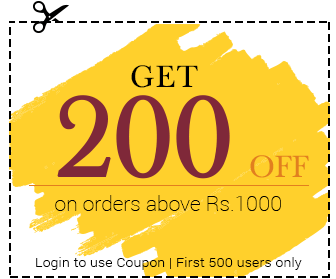
Measuring the ROI of your influencer marketing campaign
When we first start influencer marketing with many brands, they often have questions about ROI. Brands want to know exactly what kind of returns they can expect from influencer marketing.
For many brands, the only kind of reporting that they will have had from other agencies, or expect from us, is either impressions or engagement, both of which can be easily skewed any way that you want. Impressions or engagement as metrics are okay, but to many brands, these figures don’t mean a lot. Brands want to see a real return on their investment, that’s what matters.
Often, this can prove a challenge. But we’re a data-driven agency, and data is at the heart of every decision we make. So, we implemented a series of analytical avenues to really analyse our influencer marketing, as well as put our clients’ minds at rest.
Traffic

UTM Tracking
This is such a basic way to measure referral traffic from sources quickly, but many agencies or brands miss it in their influencer marketing strategies. Using UTM codes is a simple way for us to see not only the referrer, but also what campaigns are resonating with their audiences, across what platforms, and ultimately driving traffic.
Sometimes, this can stray into affiliate linking territory. While this is a great idea, you’re actually paying for that conversion twice. Once when you engage with the influencer, and then again when the influencer takes their commission from the sale.
Google Tag Manager
Using Google Tag Manager is another way to track traffic, although it can also be used to track conversions too. It’s slightly more complicated than using UTM tracking, but it can be helpful if you don’t have access to your analytics. If you work in a larger corporation, where analytics requests can take ages to be followed up, then using Google Tag Manager is an easy way for you to bypass the entire analytics department and set up the tracking yourself.
Conversions

Voucher Codes
This is probably the bargain basement of conversion tracking for influencer marketing. Creating personalised voucher codes allows you to assign conversions to each influencer, and will even work offline too. However, there are fatal flaws with voucher codes. Many consumers will forget to redeem their voucher codes or be put off by the friction involved – especially if it’s on Instagram. Even worse, if the voucher code gets onto a voucher redemption website, such as Voucher Codes, it will be available to anyone who wants to use it, regardless of whether or not they have seen the influencer’s post.
Data Capture Elements
Introducing an SMS or email element to your influencer marketing can really kill 2 birds with one stone. You can ask potential customers to either SMS or email a generic address to get their voucher code or personalised link. Once they’ve used the link or code, you can then attribute the conversions to a particular influencer.
Comment to Buy
This is one of the easiest, although time-intensive, ways to track conversions directly from Instagram. Encourage followers to comment on a post in order to buy a product, and then follow up all those that comment with a personalised link for them to purchase the product. This works well in combination with a coupon, in order to drive on-the-spot conversions.

Conversion Pixels
By placing a conversion pixel on the site, you’ll be able to see how many users who have been directed to the site ended up converting on their own. However, this doesn’t include those that click through on retargeting ads, as those conversions will be attributed to the retargeting partner, as opposed to the influencer directly. Although we can measure the conversion pathway in some cases, so will be able to see if the influencers had some impact.
Conversion pixels can be used in different ways to measure conversions from influencer posts and to measure audiences. If the influencer you are working with has already tagged up their site, by using a pixel it can be incredibly useful to see if anyone converts over a longer period of time, as well as storing their cookies to utilise in the future. This is especially useful for conversions with a longer completion cycle, rather than immediate-purchase products like clothing.
However, many mid-level influencers won’t have their sites tagged up for pixels, and can be quite touchy about tagging up their entire site. If this is the case, using a single click tracker, with an embedded pixel on your sponsored or collaborative content can be a quick workaround, as you can track the user offsite.
Using pixels are a great way to track post-click and post-view conversions, as long as users are directed to follow tracked links or click-throughs to the site. As long as they convert within 30 days, you’ll have a nice measurable way to track ROI for influencer marketing.

We’ve found that influencer marketing is an incredibly in-demand channel, and a powerful tool for brands to get their products and messaging in front of consumers who are receptive to it. But ultimately, data is the king in any corporate setting. Making sure you are utilising the data available for your influencer marketing is the key to creating results that have a positive impact on your business.
